Stories > Pay It Forward
Pay It Forward
As Singapore celebrates its bicentennial, we look back at moments in time where diplomacy helped the nation achieve the collective ambitions of its people while making a difference in the lives of others around the world.
BY Therese Tay
PHOTOS SPH Library
s 2019 marks the 200th anniversary of Singapore’s founding, it’s a good time to weigh in on the country’s progress over the past two centuries. If the opening of the SingaporeMalaysia Causeway, and its role as one of the co-founders of Asean, paved the way for stronger ties with its regional neighbours, the Lion City’s membership in world institutions such as the United Nations, World Bank and International Monetary Fund further cemented its ties with the global community.
While its founding by Sir Stamford Raffles in 1819 was an inflection point, Singapore has since then steadily progressed from a regional trading post to a cosmopolitan nation known for its award-winning aviation and healthcare infrastructure, such as the Changi International Airport and Singapore General Hospital. Armed with an outward-looking but inclusive perspective, the island nation has actively contributed towards international initiatives such as peacekeeping missions in Africa and the Middle East, humanitarian aid, business, arts, sports and education.
Here are some significant milestones throughout its 200-year-old history:
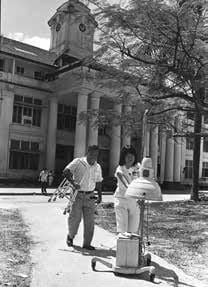
1821
Established during the British era to provide medical assistance to European troops, Indian soldiers as well as the resident population. It became the first institutionalised healthcare system in the country. SGH – as we know it today – was inaugurated in September 1981 by then Prime Minister Lee Kuan Yew. The hospital, ranked third best in the world by Newsweek magazine for its clinical research and outstanding nursing care and facilities, is the oldest and largest tertiary acute hospital and national referral centre. In 2014, SGH hosted the inaugural International Conference on Humanitarian Medical Missions, which provides a platform to medical volunteers working beyond borders to share their experiences and adopt good medical practices.
1824
This ended a period of dispute and disagreements between the British and Sultan Husain Shah and Temenggong Abdu’r Rahman representing the sultanate, and gave the EIC rights to set up a trading post in Singapore.
1855
Signed on April 18, 1855 with the Siamese kingdom, the treaty removed extensive barriers to British trading posts. This spurred a trade growth with the number of ships plying between Bangkok and Singapore increasing from 146 in 1850 to 302 in 1862. Much of Siam’s infrastructure development, including roads, bridges and its postal system, was inspired by Singapore.
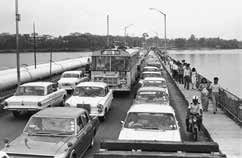 1924
1924
A road and rail link that connects Woodlands to Malaysia’s Johor Bahru, it facilitated not only trade, but also connected people on either side who share more commonalities than differences by way of language, culture, food, and even families living across the Causeway.
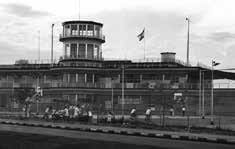 1937
1937
This was the precursor to Changi Airport and Singapore’s current status as a major air hub, connecting people from all over the world.
1963
From 1963 to 1975, Singapore received 14 loans from the World Bank to support projects in infrastructure, telecommunications and human capital development. All these loans were repaid by the mid-1980s.
1965
Singapore’s first diplomatic mission was established in Kuala Lumpur on September 6, 1965. In the same month, Singapore was admitted as the 117th member of the UN. In October 1965, Singapore became the 22nd member of the Commonwealth.
1966
As a global citizen and a respected financial hub, Singapore contributes monetarily to help reduce poverty and support global development. Its views are respected and help shape international financial policies. Former Deputy Prime Minister and current Senior Minister Tharman Shanmugaratnam is among the shortlisted candidates to succeed the outgoing International Monetary Fund managing director, Christine Lagarde, this year.
 1967
1967
Other founding members include Thailand, Malaysia, Indonesia and the Philippines. Singapore also establishes diplomatic relations with Indonesia.
1970
A 47-man team was deployed to East Pakistan (now Bangladesh) when the country was hit by a deadly cyclone. This marked the beginning of over 30 years of SAF humanitarian assistance and disaster relief missions, which included the commitment of specialised vehicles and personnel in recent aircraft search-and-rescue operations.
1971
The world’s second largest military partnership after the North Atlantic Treaty Organisation comprises Singapore, the UK, Australia, New Zealand and Malaysia as its members. Operational in the region since the British withdrew its armed forces east of the Suez, it was formed to provide security to Singapore and Malaysia from potential threats in the region.
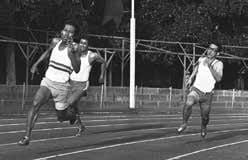 1973
1973
This marked the first time that Singapore hosted an international sports event. As sports transcends language, culture and religion, sporting diplomacy facilitates understanding and co-operation between countries and their people. Singapore also hosted the Southeast Asian Games in 1983, 1993 and 2015.
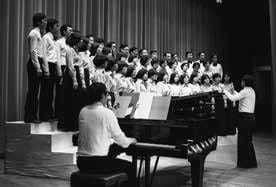 1977
1977
Now known as the Singapore International Festival of Arts, it paved the way for increased collaboration between foreign and local artistes. International artistes from 54 countries, including France, Japan, Indonesia and the Netherlands, have participated in the festival since its relaunch in 2014. The annual event has also attracted a growing audience, with the number of attendees more than tripling over the last five years.
1986
The Singapore Civil Defence Force was aided by the expertise and specialised equipment of tunnelling experts from Britain, Ireland and Japan, who were working on the nearby MRT project. Subsequent rescue efforts saved 17 lives and brought out 33 bodies.
1989
A 14-man team was deployed to Namibia, southwest Africa to assist the UN Transition Assistance Group during the country’s elections. This was a precursor to future SAF-UN missions, which included monitoring, peacekeeping and reconstruction efforts in Iraq and Kuwait during the first Gulf War in 1991, followed by Iraq’s rebuilding programme in 2003, and later to restore peace in Timor-Leste in 1999-2003 and in 2008-2012.
 1991
1991
The organisation – through initiatives such as volunteer missions, fellowships and collaborations in various fi elds, including education, healthcare and cultural programmes – uplifts lives and creates greater trust and understanding between Singaporeans and world communities.
1997
The organisation works towards better Asia-Europe ties by enhancing shared experiences and cooperation.
2004
In the SAF’s biggest overseas assistance mission to date, more than 1,500 personnel, and multiple equipment and vehicles were deployed to Indonesia and Thailand to help in relief efforts.
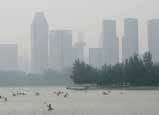 2005
2005
These packages, which included help for cloud seeding and aerial fire-fighting, demonstrate Singapore’s commitment to assist in resolving the serious issue of transboundary haze.
2012
Designed as a collaboration between the UN Development Programme and the Government of Singapore, the centre will strengthen the capacities of developing countries to improve efficiency in public services and enable sustainable socioeconomic development.
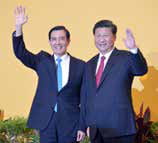 2015
2015
The meeting between then Taiwanese President Ma Ying-jeou and Xi Jinping, President of China, was the first since the end of the Chinese Civil War. It paved the way for better crossstrait relations.
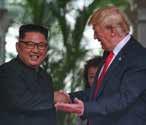 2018
2018
Pyongyang and Washington reportedly chose Singapore not only for its neutrality but also because the country is capable of providing adequate security for the meeting, which saw North Korean leader Kim Jong-un travel farther from Pyongyang than he has since beginning his rule in 2011. Widely covered by both local and international media, the summit is regarded as a historic moment.
